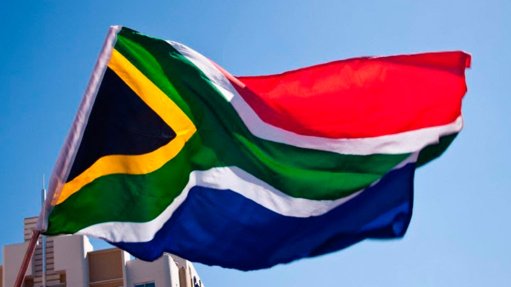Of insurrection, malls and hunger
W
hen, in July, looting and rioting broke out in KwaZulu-Natal and parts of Gauteng, we were told that the country was in the throes of an insurrection. However, politicians, the police and the army tried to convince ordinary citizens that they had things under control.
Insurrections are brutal and bloody events. They are usually orchestrated by hardened figures driven by ideology or revolutionary ideals who have little time for constitutional vignettes or the rights of those who get in their way. Their goal is to change the status quo. They exercise extreme cynicism and weaponise hunger and poverty for what are clearly illiberal pursuits and a rightwing capture of power. It is an old trick in dark arts that, in a fractured society, you direct that society towards deeper fractures. South Africa’s economic woes provide a perfect set of conditions for insurrectionists who have very few foot soldiers that are ready to die for their cause to turn the poor into cannon-fodder.
But we must first determine how malls became targets of attack during the disturbances in KwaZulu-Natal and Gauteng. We should not lose sight of the symbols they have become – totems of ‘progress’. After many malls were looted, with some razed to the ground, it became clear how they have entrapped us into a specific type of commodification and the capitalism of necessity.
In the South African context, malls have a special meaning – they are symbols of that thing those behind the recent so-called insurrection want to destroy, namely white monopoly capital (WMC). Of course, not all the malls that were targeted are owned by WMC. However, the ‘insurrectionists’ weaponised the grievances of the poor against malls, which are monuments to consumption, with the malls themselves representing the weaponisation of consumption.
Malls are distributed centres of consumption exercising, if you want, control over our desires. Malls, by their very nature, are designed to sensationalise the commodity fetish – this is why the looting spree was not only about hunger but also the unsatiated desire for gadgets, luxuries and many things that torment us because, if you do not possess them, you are forced into a status-anxiety spiral.
The French thinker Jean Baudrillard argues that, in our age of mass culture and the pornification of consumption, the gadget loses its value as a functional device but is instead infused with symbolic value, resulting in the object becoming a reification of false class mobility and becoming.
The mall, the locus of branded goods, converges function with desire. Baudrillard centres the idea of the fetish of goods as part of a ludic game (childlike attachment to things and viewing shopping as having fun) in which the function of a good is decentred from its utility value to claim a ludic role. In a sense, the object – the branded thing – attains a magical status in social relations, in turn decapitating forms of authentic culture that are able to rise above the ludic object. The mall produces its own frenzy and madness of consumption, which may explain the ferocity of the looting.
The allure of the brand and the glitter of the gadget predispose individuals to the habit of class status and consumptive competition – in which even the material benefit of a thing is displaced by its psychic value.
The mall, in its geography, if not its cultural geopolitics, occupies a predominant space and pushes to the periphery everything small and which cannot be reconciled with the massification of goods and consumption. In a sense, the mall represents a certain violence against the small trader, the community store, the spaza shop and the informal economy. Its entire allocation of space and geographic points at strategic loci of entry and exit is designed to monopolise the passion for consumption. Its ultimate aim is not to tame but to concentrate desire for things and channel it for ever more efficient extraction – in a sense, a real symbolic looting of need, desire and a sense of cultural space.
What better form of looting than to be willingly complying will the force of the extraction machinery.
It is no surprise then that, when the large mall desecrates the network of community traders by its gigantism and faces the quandary of its destruction (the corpses of ash-laden structures are there for us all to see) we realise how absurdly we have become dependent on its geography, structure and the logistical networks that feed the insatiable consumption machinery the mall has become.
Ironically, the commodity has become more valuable than life itself – in the view of both those who push it like opioids on to us and the looters, some of whom were not driven by hunger, but were just as caught up in this idolatry for things of glitter. Later, many were found selling both food and goods from the back of their BMWs and Mercedes-Benzes.
The problem of the mall, given its own cultural violence, is a psychic one that infects all of society in which objects that tease and reduce us to envy or to become loyalists to the machinery of extraction and attachment to objects.
The fallout of years of hopelessness that has been sparked by former President Jacob Zuma’s imprisonment and the failed insurrection, if that is indeed the case, should force us to reflect on the continuity of life as it is. Years of economic failure and trickle-down capitalism are the root causes of poverty- stricken blowback. Hunger in our country cannot give anybody peace of mind and is an indictment on the whole of South Africa.
Article Enquiry
Email Article
Save Article
Feedback
To advertise email advertising@creamermedia.co.za or click here
Comments
Press Office
Announcements
What's On
Subscribe to improve your user experience...
Option 1 (equivalent of R125 a month):
Receive a weekly copy of Creamer Media's Engineering News & Mining Weekly magazine
(print copy for those in South Africa and e-magazine for those outside of South Africa)
Receive daily email newsletters
Access to full search results
Access archive of magazine back copies
Access to Projects in Progress
Access to ONE Research Report of your choice in PDF format
Option 2 (equivalent of R375 a month):
All benefits from Option 1
PLUS
Access to Creamer Media's Research Channel Africa for ALL Research Reports, in PDF format, on various industrial and mining sectors
including Electricity; Water; Energy Transition; Hydrogen; Roads, Rail and Ports; Coal; Gold; Platinum; Battery Metals; etc.
Already a subscriber?
Forgotten your password?
Receive weekly copy of Creamer Media's Engineering News & Mining Weekly magazine (print copy for those in South Africa and e-magazine for those outside of South Africa)
➕
Recieve daily email newsletters
➕
Access to full search results
➕
Access archive of magazine back copies
➕
Access to Projects in Progress
➕
Access to ONE Research Report of your choice in PDF format
RESEARCH CHANNEL AFRICA
R4500 (equivalent of R375 a month)
SUBSCRIBEAll benefits from Option 1
➕
Access to Creamer Media's Research Channel Africa for ALL Research Reports on various industrial and mining sectors, in PDF format, including on:
Electricity
➕
Water
➕
Energy Transition
➕
Hydrogen
➕
Roads, Rail and Ports
➕
Coal
➕
Gold
➕
Platinum
➕
Battery Metals
➕
etc.
Receive all benefits from Option 1 or Option 2 delivered to numerous people at your company
➕
Multiple User names and Passwords for simultaneous log-ins
➕
Intranet integration access to all in your organisation


















